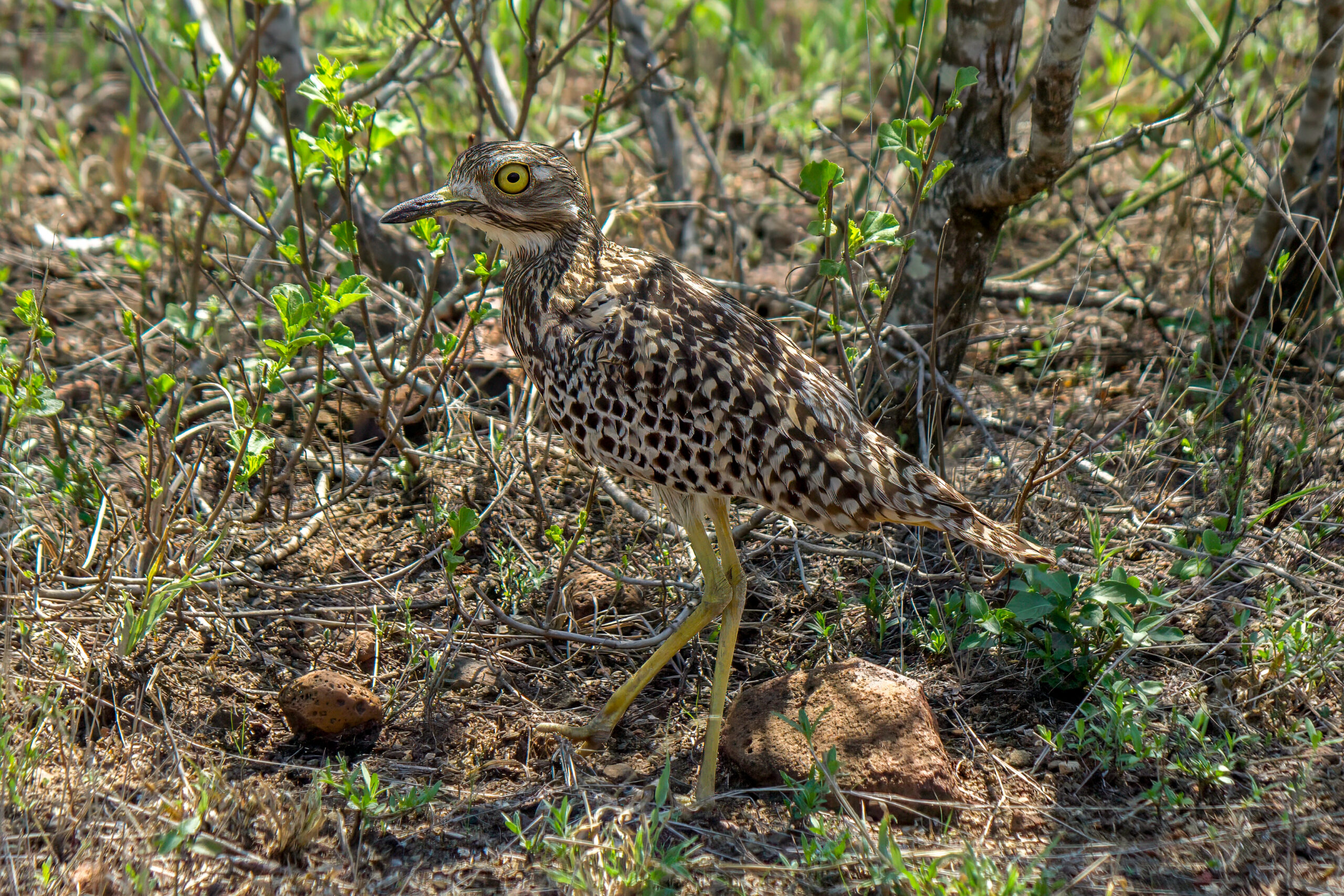Description
The water thick-knee (Burhinus vermiculatus) is an African terrestrial wader in the stone-curlew/thick-knee family. It grows to a length of 38-41 cm (15-16 in) and a weight of 280-430 g (0.6-0.95 lb.). It is a cryptically colored bird which makes for good camouflage. Like other birds in the family, it has large yellow eyes, a short, stout bill and knee joints that are larger than in species of other related families. The water thick-knee is similar to two other species found in Africa and it only slightly overlaps with them at the upper northern reaches of its range. There are slight differences in size and coloration, but the upper line of the folded wing can serve as a good way of separating the three species. The Senegal thick-knee (Burhinus senegalensis) has a singular black line, the over-wintering Eurasian thick-knee (Burhinus oedicnemus) has a black-white-black line, whereas the water thick-knee has a black-white line, as can be seen in the main photo above.
Diet & habitat
Like other thick-knee species, the water thick-knee is mainly nocturnal and will normally rest close to water during the day hidden away in vegetation or amongst rocks. It is somewhat less nocturnal than other thick-knee species making sightings more likely during daytime hours. As the name suggests, it prefer habitats close to water, such as shorelines, riverbanks, mangroves, and other forms of sheltered wetland. At night it will forage alone, in pairs, or in small groups for invertebrates and smaller vertebrates such as reptiles and frogs. It rarely ventures further than 1 km from water.
Nesting
Breeding season varies between geographical locations but normally coincides with the late dry season or early rains. The water thick-knee is monogamous and partners for life. An individual will only find a new partner if the previous dies. One to three eggs are laid in a nest on the ground in simple scrapes close to water and often in proximity to landmarks, such as driftwood, bushes or even animal dung. Nests can often be quite open with little cover, but size and egg coloration make them well camouflaged. Both sexes take part in the incubation for about 22-25 days before they hatch.
Status
The water thick-knee is a widespread species with stable and large population. There are no threats, and the species may have benefited from the creation of artificial water bodies. It is listed as least concern on the IUCN Red List.








